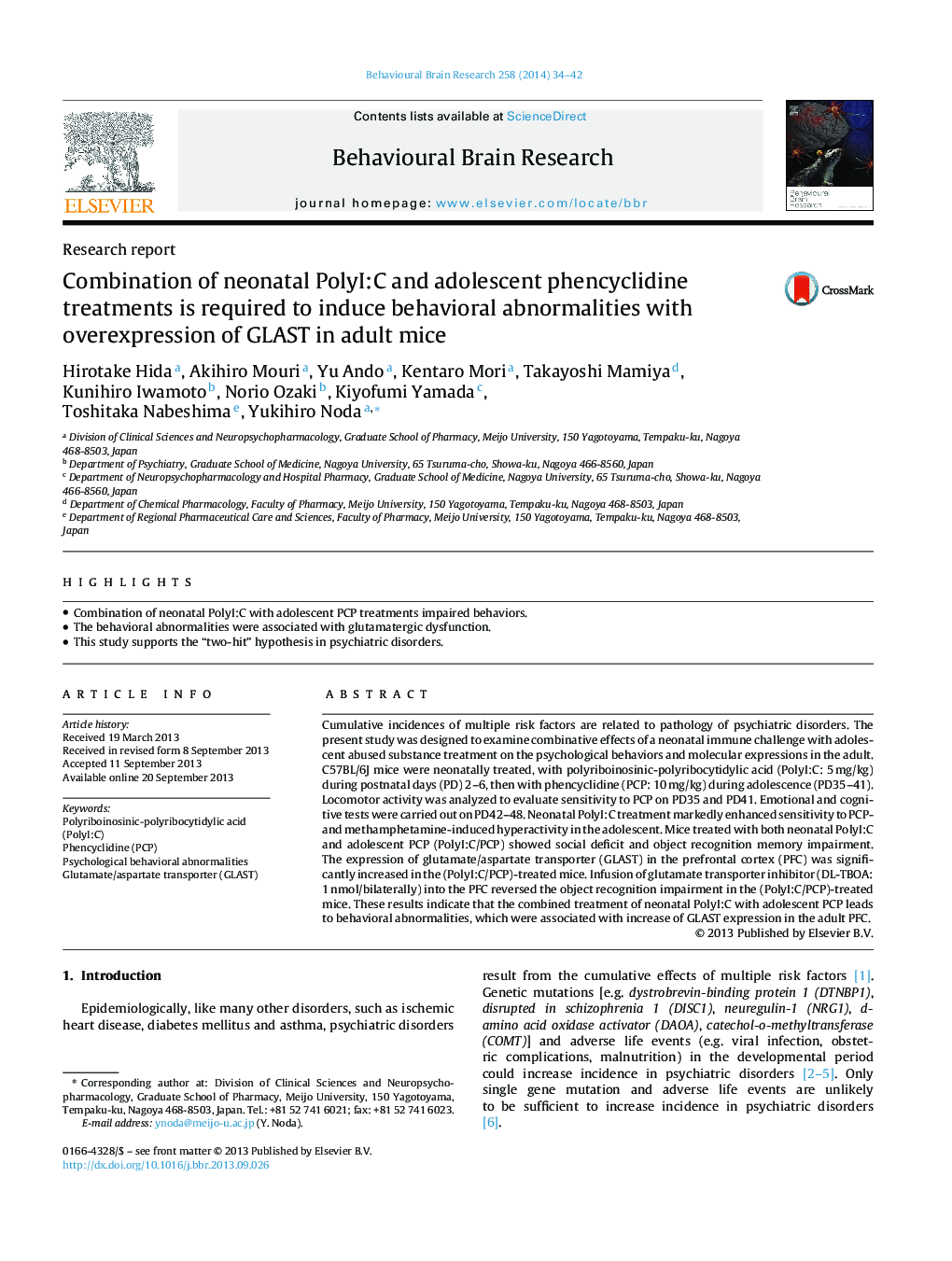| Article ID | Journal | Published Year | Pages | File Type |
|---|---|---|---|---|
| 6258429 | Behavioural Brain Research | 2014 | 9 Pages |
â¢Combination of neonatal PolyI:C with adolescent PCP treatments impaired behaviors.â¢The behavioral abnormalities were associated with glutamatergic dysfunction.â¢This study supports the “two-hit” hypothesis in psychiatric disorders.
Cumulative incidences of multiple risk factors are related to pathology of psychiatric disorders. The present study was designed to examine combinative effects of a neonatal immune challenge with adolescent abused substance treatment on the psychological behaviors and molecular expressions in the adult. C57BL/6J mice were neonatally treated, with polyriboinosinic-polyribocytidylic acid (PolyI:C: 5Â mg/kg) during postnatal days (PD) 2-6, then with phencyclidine (PCP: 10Â mg/kg) during adolescence (PD35-41). Locomotor activity was analyzed to evaluate sensitivity to PCP on PD35 and PD41. Emotional and cognitive tests were carried out on PD42-48. Neonatal PolyI:C treatment markedly enhanced sensitivity to PCP- and methamphetamine-induced hyperactivity in the adolescent. Mice treated with both neonatal PolyI:C and adolescent PCP (PolyI:C/PCP) showed social deficit and object recognition memory impairment. The expression of glutamate/aspartate transporter (GLAST) in the prefrontal cortex (PFC) was significantly increased in the (PolyI:C/PCP)-treated mice. Infusion of glutamate transporter inhibitor (DL-TBOA: 1Â nmol/bilaterally) into the PFC reversed the object recognition impairment in the (PolyI:C/PCP)-treated mice. These results indicate that the combined treatment of neonatal PolyI:C with adolescent PCP leads to behavioral abnormalities, which were associated with increase of GLAST expression in the adult PFC.
